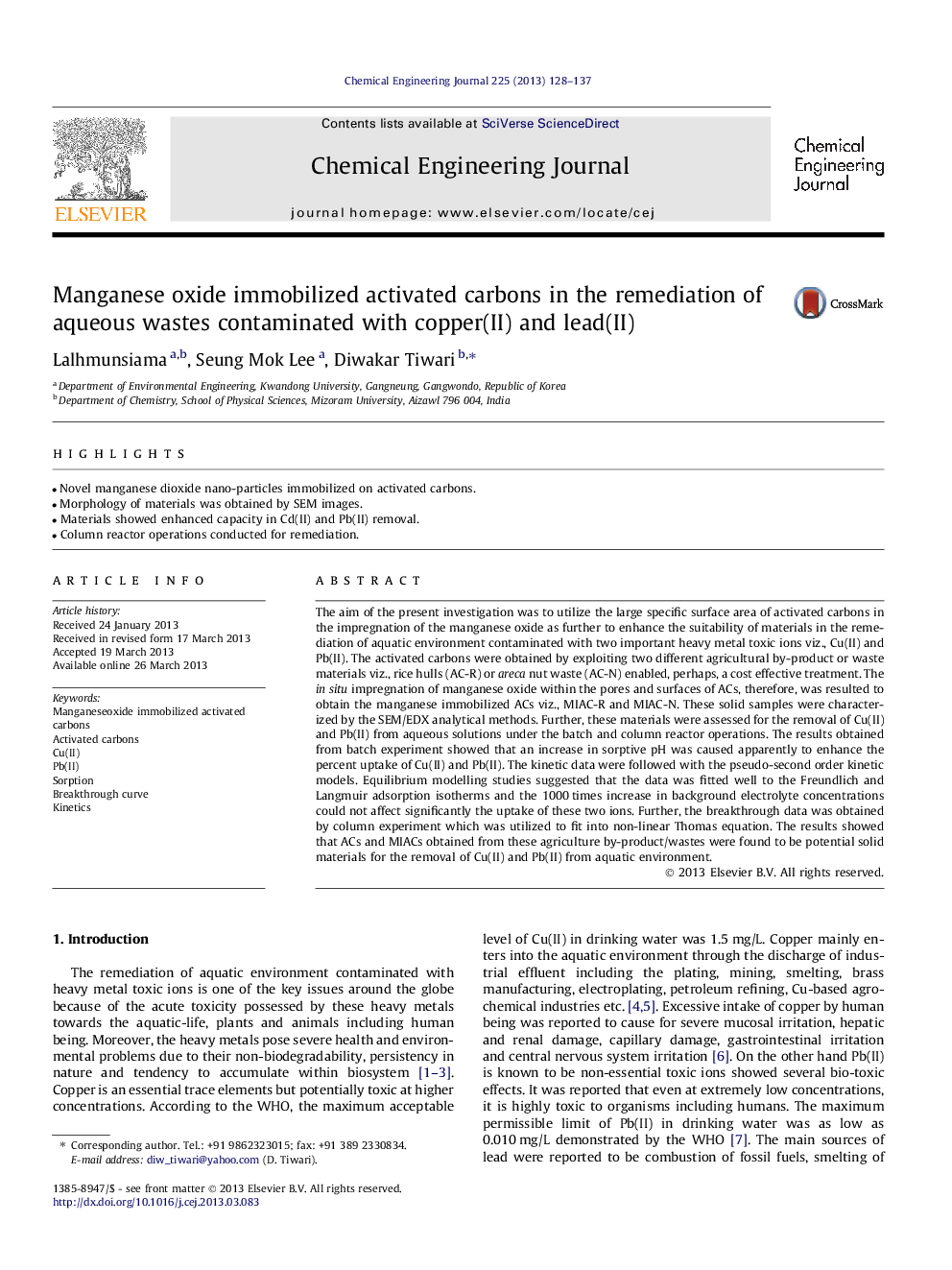| Article ID | Journal | Published Year | Pages | File Type |
|---|---|---|---|---|
| 148667 | Chemical Engineering Journal | 2013 | 10 Pages |
•Novel manganese dioxide nano-particles immobilized on activated carbons.•Morphology of materials was obtained by SEM images.•Materials showed enhanced capacity in Cd(II) and Pb(II) removal.•Column reactor operations conducted for remediation.
The aim of the present investigation was to utilize the large specific surface area of activated carbons in the impregnation of the manganese oxide as further to enhance the suitability of materials in the remediation of aquatic environment contaminated with two important heavy metal toxic ions viz., Cu(II) and Pb(II). The activated carbons were obtained by exploiting two different agricultural by-product or waste materials viz., rice hulls (AC-R) or areca nut waste (AC-N) enabled, perhaps, a cost effective treatment. The in situ impregnation of manganese oxide within the pores and surfaces of ACs, therefore, was resulted to obtain the manganese immobilized ACs viz., MIAC-R and MIAC-N. These solid samples were characterized by the SEM/EDX analytical methods. Further, these materials were assessed for the removal of Cu(II) and Pb(II) from aqueous solutions under the batch and column reactor operations. The results obtained from batch experiment showed that an increase in sorptive pH was caused apparently to enhance the percent uptake of Cu(II) and Pb(II). The kinetic data were followed with the pseudo-second order kinetic models. Equilibrium modelling studies suggested that the data was fitted well to the Freundlich and Langmuir adsorption isotherms and the 1000 times increase in background electrolyte concentrations could not affect significantly the uptake of these two ions. Further, the breakthrough data was obtained by column experiment which was utilized to fit into non-linear Thomas equation. The results showed that ACs and MIACs obtained from these agriculture by-product/wastes were found to be potential solid materials for the removal of Cu(II) and Pb(II) from aquatic environment.
